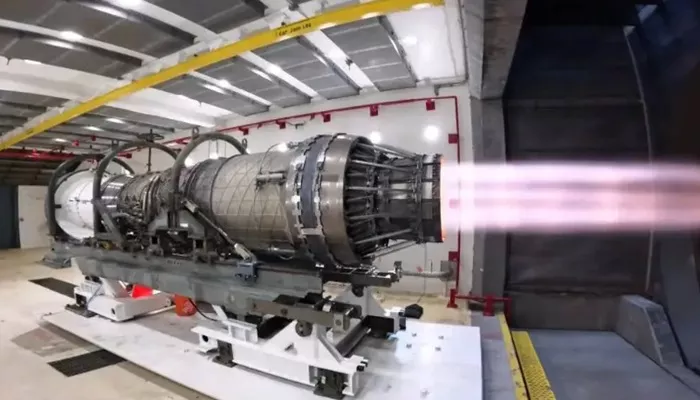Hermeus, a leading aerospace and defense technology company focused on high-speed aircraft, has officially opened its new High Enthalpy Air-Breathing Test Facility (HEAT). The facility’s launch was marked by a series of successful tests of the Pratt & Whitney F100 engine, a key milestone in advancing hypersonic and supersonic propulsion technology.
The HEAT facility is expected to play a vital role in both military and commercial engine testing. It aims to improve the efficiency and reduce the costs of testing infrastructure for supersonic and hypersonic technologies. This development comes at a time when demand for such testing capabilities is growing rapidly.
AJ Piplica, co-founder and CEO of Hermeus, highlighted the significance of the new facility. “In just three months since breaking ground, HEAT is now operational and ready to provide low-cost, high-capability propulsion testing,” he said. “Current hypersonic test facilities are often booked a year or more in advance and are extremely expensive. HEAT will address these challenges by increasing capacity, lowering costs, and becoming a critical national resource for hypersonic testing.”
The HEAT facility is being developed in phases. Future upgrades will include the ability to generate continuous high-Mach vitiated airflow, which will allow for more realistic hypersonic testing conditions on the ground. This will enable researchers to simulate flight-like environments more accurately.
The Pratt & Whitney F100 engine, which was successfully tested at HEAT, will be used in Hermeus’ upcoming aircraft, the Quarterhorse Mk 2. When combined with Hermeus’ proprietary precooler engine technology, the Mk 2 is expected to achieve speeds exceeding Mach 2.5, making it the world’s first autonomous aircraft capable of such high-Mach performance.
The F100 engine will also form the core of Hermeus’ Chimera engine, a turbine-based combined cycle engine designed to reach hypersonic speeds of Mach 5. The Chimera engine will power the Quarterhorse Mk 3, an aircraft intended to demonstrate the transition from turbine to ramjet mode during flight. If successful, the Mk 3 could potentially break the air speed record currently held by the iconic SR-71.
Hermeus’ advancements with the HEAT facility and its innovative engine technologies mark a significant step forward in the pursuit of hypersonic flight. The company’s efforts could pave the way for faster, more efficient air travel and strengthen national capabilities in high-speed aerospace technology.
Related topic:
- Intel Arrow Lake Samples Sold on Chinese Marketplace
- Desdorp Studio’s FemtoGlass Wins Iron A’ Design Award in Machinery
- Power and Priorities: Key Considerations When Buying Generators

